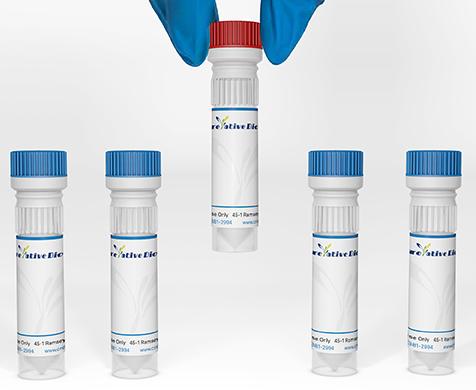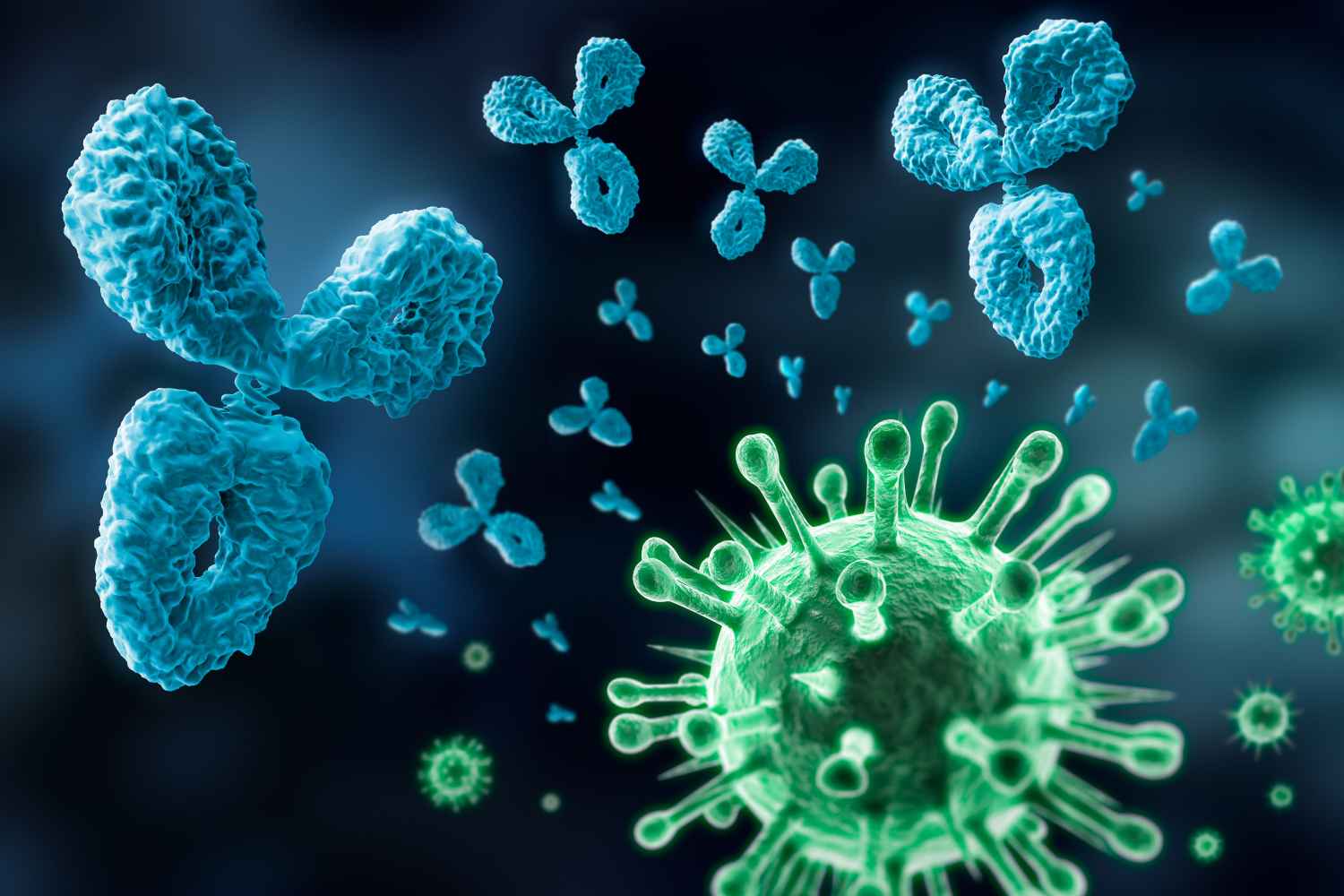GPS2
This gene encodes a protein involved in G protein-mitogen-activated protein kinase (MAPK) signaling cascades. When overexpressed in mammalian cells, this gene could potently suppress a RAS- and MAPK-mediated signal and interfere with JNK activity, suggesting that the function of this gene may be signal repression. The encoded protein is an integral subunit of the NCOR1-HDAC3 (nuclear receptor corepressor 1-histone deacetylase 3) complex, and it was shown that the complex inhibits JNK activation through this subunit and thus could potentially provide an alternative mechanism for hormone-mediated antagonism of AP1 (activator protein 1) function.
Full Name
G protein pathway suppressor 2
Function
Key regulator of inflammation, lipid metabolism and mitochondrion homeostasis that acts by inhibiting the activity of the ubiquitin-conjugating enzyme UBE2N/Ubc13, thereby inhibiting 'Lys-63'-linked ubiquitination (By similarity).
In the nucleus, can both acts as a corepressor and coactivator of transcription, depending on the context (PubMed:24943844).
Acts as a transcription coactivator in adipocytes by promoting the recruitment of PPARG to promoters: acts by inhibiting the activity of the ubiquitin-conjugating enzyme UBE2N/Ubc13, leading to stabilization of KDM4A and subsequent histone H3 'Lys-9' (H3K9) demethylation (By similarity).
Promotes cholesterol efflux by acting as a transcription coactivator (PubMed:19481530).
Acts as a regulator of B-cell development by inhibiting UBE2N/Ubc13, thereby restricting the activation of Toll-like receptors (TLRs) and B-cell antigen receptors (BCRs) signaling pathways (By similarity).
Acts as a key mediator of mitochondrial stress response: in response to mitochondrial depolarization, relocates from the mitochondria to the nucleus following desumoylation and specifically promotes expression of nuclear-encoded mitochondrial genes (PubMed:29499132).
Promotes transcription of nuclear-encoded mitochondrial genes by inhibiting UBE2N/Ubc13 (PubMed:29499132).
Can also act as a corepressor as part of the N-Cor repressor complex by repressing active PPARG (PubMed:19858209, PubMed:24943844).
Plays an anti-inflammatory role in macrophages and is required for insulin sensitivity by acting as a corepressor (By similarity).
Plays an anti-inflammatory role during the hepatic acute phase response by interacting with sumoylated NR1H2 and NR5A2 proteins, thereby preventing N-Cor corepressor complex dissociation (PubMed:20159957).
In the cytosol, also plays a non-transcriptional role by regulating insulin signaling and pro-inflammatory pathways (By similarity).
In the cytoplasm, acts as a negative regulator of inflammation by inhibiting the proinflammatory TNF-alpha pathway; acts by repressing UBE2N/Ubc13 activity (By similarity).
In the cytoplasm of adipocytes, restricts the activation of insulin signaling via inhibition of UBE2N/Ubc13-mediated ubiquitination of AKT (By similarity).
Able to suppress G-protein- and mitogen-activated protein kinase-mediated signal transduction (PubMed:8943324).
Acts as a tumor-suppressor in liposarcoma (PubMed:27460081).
(Microbial infection) Required for efficient replication of hepatitis C virus (HCV) by promoting the interaction between VAPA and HCV virus protein NS5A.
In the nucleus, can both acts as a corepressor and coactivator of transcription, depending on the context (PubMed:24943844).
Acts as a transcription coactivator in adipocytes by promoting the recruitment of PPARG to promoters: acts by inhibiting the activity of the ubiquitin-conjugating enzyme UBE2N/Ubc13, leading to stabilization of KDM4A and subsequent histone H3 'Lys-9' (H3K9) demethylation (By similarity).
Promotes cholesterol efflux by acting as a transcription coactivator (PubMed:19481530).
Acts as a regulator of B-cell development by inhibiting UBE2N/Ubc13, thereby restricting the activation of Toll-like receptors (TLRs) and B-cell antigen receptors (BCRs) signaling pathways (By similarity).
Acts as a key mediator of mitochondrial stress response: in response to mitochondrial depolarization, relocates from the mitochondria to the nucleus following desumoylation and specifically promotes expression of nuclear-encoded mitochondrial genes (PubMed:29499132).
Promotes transcription of nuclear-encoded mitochondrial genes by inhibiting UBE2N/Ubc13 (PubMed:29499132).
Can also act as a corepressor as part of the N-Cor repressor complex by repressing active PPARG (PubMed:19858209, PubMed:24943844).
Plays an anti-inflammatory role in macrophages and is required for insulin sensitivity by acting as a corepressor (By similarity).
Plays an anti-inflammatory role during the hepatic acute phase response by interacting with sumoylated NR1H2 and NR5A2 proteins, thereby preventing N-Cor corepressor complex dissociation (PubMed:20159957).
In the cytosol, also plays a non-transcriptional role by regulating insulin signaling and pro-inflammatory pathways (By similarity).
In the cytoplasm, acts as a negative regulator of inflammation by inhibiting the proinflammatory TNF-alpha pathway; acts by repressing UBE2N/Ubc13 activity (By similarity).
In the cytoplasm of adipocytes, restricts the activation of insulin signaling via inhibition of UBE2N/Ubc13-mediated ubiquitination of AKT (By similarity).
Able to suppress G-protein- and mitogen-activated protein kinase-mediated signal transduction (PubMed:8943324).
Acts as a tumor-suppressor in liposarcoma (PubMed:27460081).
(Microbial infection) Required for efficient replication of hepatitis C virus (HCV) by promoting the interaction between VAPA and HCV virus protein NS5A.
Biological Process
B cell differentiation Source: UniProtKB
Inactivation of MAPK activity Source: ProtInc
JNK cascade Source: ProtInc
Negative regulation of B cell receptor signaling pathway Source: UniProtKB
Negative regulation of fat cell differentiation Source: UniProtKB
Negative regulation of inflammatory response Source: UniProtKB
Negative regulation of JNK cascade Source: UniProtKB
Negative regulation of protein K63-linked ubiquitination Source: UniProtKB
Negative regulation of toll-like receptor signaling pathway Source: UniProtKB
Negative regulation of transcription by RNA polymerase II Source: UniProtKB
Negative regulation of tumor necrosis factor-mediated signaling pathway Source: UniProtKB
Positive regulation of cholesterol efflux Source: UniProtKB
Positive regulation of peroxisome proliferator activated receptor signaling pathway Source: UniProtKB
Positive regulation of transcription by RNA polymerase II Source: UniProtKB
Regulation of fat cell differentiation Source: UniProtKB
Regulation of lipid metabolic process Source: UniProtKB
Response to mitochondrial depolarisation Source: UniProtKB
Inactivation of MAPK activity Source: ProtInc
JNK cascade Source: ProtInc
Negative regulation of B cell receptor signaling pathway Source: UniProtKB
Negative regulation of fat cell differentiation Source: UniProtKB
Negative regulation of inflammatory response Source: UniProtKB
Negative regulation of JNK cascade Source: UniProtKB
Negative regulation of protein K63-linked ubiquitination Source: UniProtKB
Negative regulation of toll-like receptor signaling pathway Source: UniProtKB
Negative regulation of transcription by RNA polymerase II Source: UniProtKB
Negative regulation of tumor necrosis factor-mediated signaling pathway Source: UniProtKB
Positive regulation of cholesterol efflux Source: UniProtKB
Positive regulation of peroxisome proliferator activated receptor signaling pathway Source: UniProtKB
Positive regulation of transcription by RNA polymerase II Source: UniProtKB
Regulation of fat cell differentiation Source: UniProtKB
Regulation of lipid metabolic process Source: UniProtKB
Response to mitochondrial depolarisation Source: UniProtKB
Cellular Location
Mitochondrion; Cytosol; Nucleus. Sumoylation regulates the subcellular location (PubMed:24943844). Relocates from the mitochondria to the nucleus following desumoylation, leading to mediate mitochondrial stress response (By similarity).
PTM
Sumoylation regulates its subcellular location (PubMed:24943844). Sumoylation at Lys-45 and Lys-71 regulates the shuttling between the cytoplasm and the nucleus (PubMed:24943844). Sumoylation at Lys-71 is required for interaction with TBL1X (By similarity). Sumoylated at Lys-45 and Lys-71 in mitochondrion (By similarity). Desumoylation by SENP1 leads to relocation from the mitochondria to the nucleus (By similarity).
Ubiquitinated at the C-terminus by SIAH2; leading to its degradation by the proteasome. Interaction with TBL1X and methylation at Arg-323 protect GPS2 against ubiquitination and degradation.
Methylated at Arg-312 and Arg-323 by PRMT6. Methylation at Arg-323 protects from degradation by the proteasome.
Ubiquitinated at the C-terminus by SIAH2; leading to its degradation by the proteasome. Interaction with TBL1X and methylation at Arg-323 protect GPS2 against ubiquitination and degradation.
Methylated at Arg-312 and Arg-323 by PRMT6. Methylation at Arg-323 protects from degradation by the proteasome.
View more
Anti-GPS2 antibodies
+ Filters
 Loading...
Loading...
Target: GPS2
Host: Mouse
Antibody Isotype: IgG
Specificity: Human
Clone: 16C53
Application*: E, WB
Target: GPS2
Host: Mouse
Antibody Isotype: IgG1, κ
Specificity: Human
Clone: 3C4
Application*: E, WB
Target: GPS2
Host: Mouse
Antibody Isotype: IgG1, κ
Specificity: Human
Clone: 1E2
Application*: WB
Target: GPS2
Host: Mouse
Antibody Isotype: IgG3, κ
Specificity: Human
Clone: CBFYH-0467
Application*: E, WB
Target: GPS2
Host: Rabbit
Antibody Isotype: IgG
Specificity: Human, Mouse, Rat
Clone: EG1421
Application*: WB: 1:500~1:1000 ELISA: 1:40000
More Infomation
Hot products 
-
Rabbit Anti-Acetyl-Histone H3 (Lys36) Recombinant Antibody (V2-623395) (CBMAB-CP0994-LY)

-
Mouse Anti-F11R Recombinant Antibody (402) (CBMAB-0026-WJ)

-
Mouse Anti-ASB9 Recombinant Antibody (1D8) (CBMAB-A0529-LY)

-
Mouse Anti-AAV9 Recombinant Antibody (V2-634029) (CBMAB-AP023LY)

-
Mouse Anti-AOC3 Recombinant Antibody (CBYY-0014) (CBMAB-0014-YY)

-
Mouse Anti-BBS2 Recombinant Antibody (CBYY-0253) (CBMAB-0254-YY)

-
Rabbit Anti-ATF4 Recombinant Antibody (D4B8) (CBMAB-A3872-YC)

-
Mouse Anti-CGAS Recombinant Antibody (CBFYM-0995) (CBMAB-M1146-FY)

-
Mouse Anti-ACE2 Recombinant Antibody (V2-179293) (CBMAB-A0566-YC)

-
Mouse Anti-dsRNA Recombinant Antibody (2) (CBMAB-D1807-YC)

-
Mouse Anti-CCS Recombinant Antibody (CBFYC-1093) (CBMAB-C1150-FY)

-
Mouse Anti-AKT1 (Phosphorylated S473) Recombinant Antibody (V2-505430) (PTM-CBMAB-0067LY)

-
Mouse Anti-BZLF1 Recombinant Antibody (BZ.1) (CBMAB-AP705LY)

-
Mouse Anti-ALB Recombinant Antibody (V2-363290) (CBMAB-S0173-CQ)

-
Mouse Anti-HTLV-1 gp46 Recombinant Antibody (CBMW-H1006) (CBMAB-V208-1154-FY)

-
Mouse Anti-EPO Recombinant Antibody (CBFYR0196) (CBMAB-R0196-FY)

-
Mouse Anti-CCDC6 Recombinant Antibody (CBXC-0106) (CBMAB-C5397-CQ)

-
Mouse Anti-EGR1 Recombinant Antibody (CBWJZ-100) (CBMAB-Z0289-WJ)

-
Mouse Anti-COL12A1 Recombinant Antibody (CBYY-C3117) (CBMAB-C4560-YY)

-
Rat Anti-4-1BB Recombinant Antibody (V2-1558) (CBMAB-0953-LY)

For Research Use Only. Not For Clinical Use.
(P): Predicted
* Abbreviations
- AActivation
- AGAgonist
- APApoptosis
- BBlocking
- BABioassay
- BIBioimaging
- CImmunohistochemistry-Frozen Sections
- CIChromatin Immunoprecipitation
- CTCytotoxicity
- CSCostimulation
- DDepletion
- DBDot Blot
- EELISA
- ECELISA(Cap)
- EDELISA(Det)
- ESELISpot
- EMElectron Microscopy
- FFlow Cytometry
- FNFunction Assay
- GSGel Supershift
- IInhibition
- IAEnzyme Immunoassay
- ICImmunocytochemistry
- IDImmunodiffusion
- IEImmunoelectrophoresis
- IFImmunofluorescence
- IGImmunochromatography
- IHImmunohistochemistry
- IMImmunomicroscopy
- IOImmunoassay
- IPImmunoprecipitation
- ISIntracellular Staining for Flow Cytometry
- LALuminex Assay
- LFLateral Flow Immunoassay
- MMicroarray
- MCMass Cytometry/CyTOF
- MDMeDIP
- MSElectrophoretic Mobility Shift Assay
- NNeutralization
- PImmunohistologyp-Paraffin Sections
- PAPeptide Array
- PEPeptide ELISA
- PLProximity Ligation Assay
- RRadioimmunoassay
- SStimulation
- SESandwich ELISA
- SHIn situ hybridization
- TCTissue Culture
- WBWestern Blot

Online Inquiry





